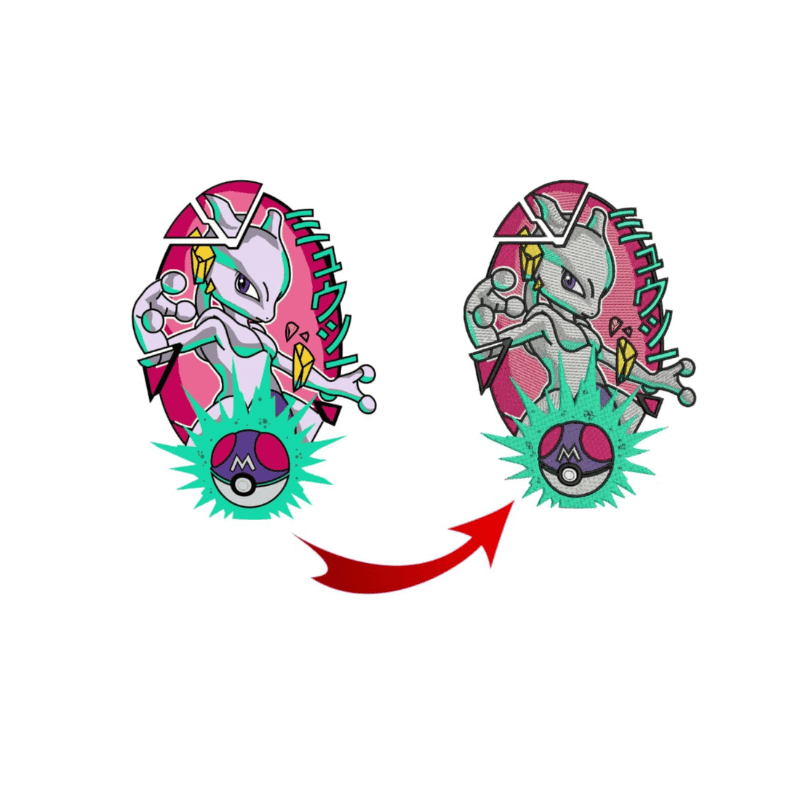Grasping the Embroidery Digitizing Process: Your Ultimate Guide
Needlework digitizing is a meticulous craft that needs precision and expertise to convert elaborate layouts into digital formats for equipment embroidery. As craftsmens get started on this trip to understand the needlework digitizing procedure, an extensive understanding of the fundamentals establishes the foundation for quality.

Comprehending Embroidery Digitizing Fundamentals
Needlework digitizing basics create the structure upon which detailed designs are translated into machine-readable styles for precise sewing. This first step in the embroidery digitizing process is critical for guaranteeing that the final stitched item is a faithful depiction of the original style. Understanding needlework digitizing fundamentals entails grasping crucial principles such as stitch kinds, sew instructions, density, underlay, and pull settlement.
Sew kinds play an essential role in figuring out the visual and textural end result of the embroidered layout. By choosing the appropriate stitch kind, whether it be satin, fill, or running stitch, digitizers can accomplish the preferred effect and boost the general top quality of the embroidery. Additionally, sew direction influences the flow and dimension of the layout, while density establishes the spacing and protection of the stitches.
Furthermore, underlay sewing offers stability to the design by securing the material and stopping distortion throughout the embroidery procedure. Pull payment is one more vital factor to consider to counteract the all-natural tendency of material to agreement when stitched. Grasping these needlework digitizing essentials is essential for producing professional-quality stitched products.
Picking the Right Digitizing Software Application
Selecting the proper digitizing software application is a vital decision that considerably affects the efficiency and quality of the needlework digitizing process. Digitizing for Embroidery. When choosing the appropriate digitizing software, it is necessary to take into consideration factors such as the complexity of layouts you plan to produce, the user-friendliness of the software application, the degree of customer assistance used, and the compatibility with your needlework machine
There are different digitizing software program alternatives readily available on the market, ranging from basic programs for novices to advanced software program for professional digitizers. Some prominent selections consist of Wilcom EmbroideryStudio, Hatch Needlework Software Application, and PulseID. These software application bundles supply a wide variety of devices and features to assist you develop detailed styles easily.
Before deciding, it is suggested to discover the different software choices through complimentary trials or demos to figure out which one best fits your needs. Additionally, reviewing reviews and seeking recommendations from skilled digitizers can supply beneficial understandings into the toughness and weaknesses of each software plan (Digitizing for Embroidery). By meticulously examining your demands and contrasting the features of various digitizing software program, you can make an enlightened option that improves your needlework digitizing workflow
Digitizing Tools and Strategies

Optimizing Layout Setup for Embroidery
Mastering the intricacies of style settings is essential in accomplishing ideal results in the embroidery digitizing process, building upon the foundation laid by comprehending digitizing tools and methods. When optimizing layout setups for needlework, it is important to consider factors such as stitch kind, thickness, underlay, pull compensation, and enrollment. Enrollment settings line up different components of the layout precisely, maintaining general layout honesty.

Troubleshooting Common Digitizing Issues
When running into typical digitizing concerns throughout the needlework process, it is vital to comprehend the source and implement efficient options quickly. One common problem is stitch thickness issues, where stitches content may be also thick, creating the material to pucker, or too sparse, leading to voids in the design. Adjusting the stitch density settings in the digitizing software can help resolve this concern.
One more constant obstacle is string breaks throughout the needlework process. This can take place due to numerous factors such as inaccurate tension settings, plain needles, or making use of low-grade thread. Ensuring correct maintenance of the embroidery maker, consisting of regular needle changes and stress adjustments, can lessen the occurrence of string breaks.
Moreover, layout enrollment mistakes can lead to misaligned aspects within the needlework style. Examining the design positioning in additional reading the digitizing software application and making needed changes before stitching can assist in avoiding this issue. By resolving these usual digitizing concerns quickly and properly, you can make certain a smoother embroidery process and top quality finished items.
Final Thought
In conclusion, mastering the needlework digitizing process requires a solid understanding of the essentials, the best selection of software application, and knowledge of tools and strategies. Optimizing layout setups and repairing usual digitizing issues are crucial action in making certain high-quality embroidery outcomes. By following these steps faithfully, one can accomplish accuracy and performance in the digitizing procedure.